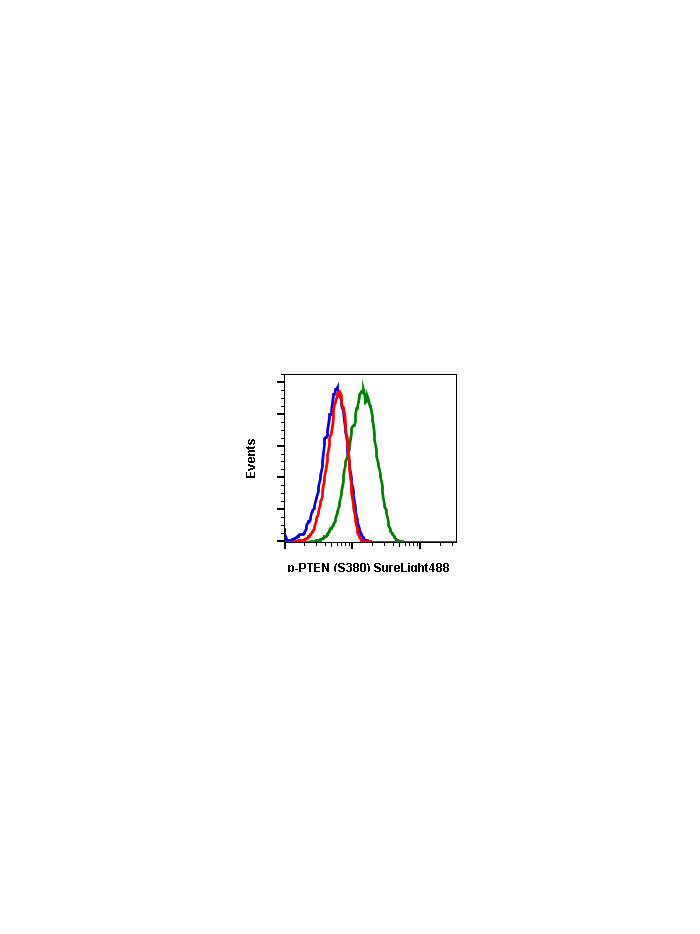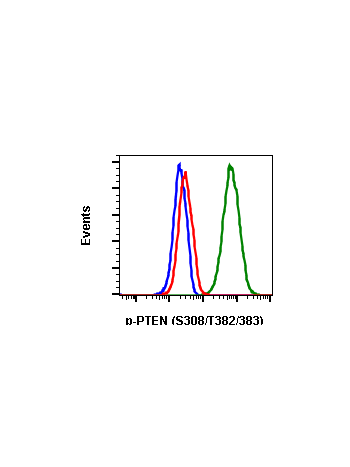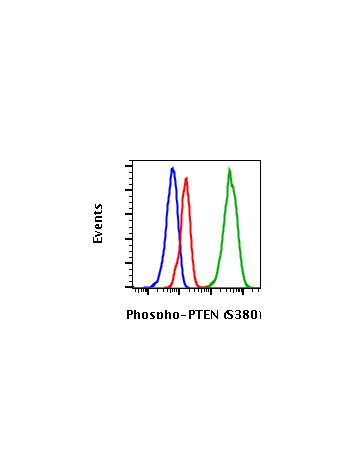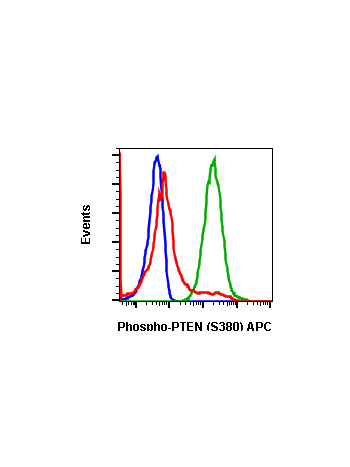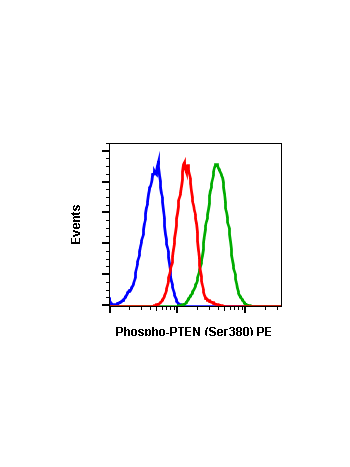Phospho-PTEN (Ser380) (NA9) rabbit mAb SureLight488 conjugate
From
$118.80
In stock
Only %1 left
SKU
2240
PTEN has been identified as a tumor suppressor gene and has been found to be mutated in a significant number of human cancers, including prostate, brain, and breast cancer. PTEN shares sequence homology with the protein-tyrosine phosphatase (PTPase) family of proteins and negatively regulates the PI3K/Akt pathway. PTEN de-phosphorylates target proteins, and recombinant PTEN has been shown to have phosphoinositide 3-phosphhatase and inositol phosphate 3-phosphatase activity. Studies of primary tumor cells show a loss of PTEN expression after metastasis to the brain, via astrocyte-derived microRNAs. A cluster of phosphorylation sites (S380, T382, T383, and S385) in the C-terminal tail of PTEN drive a conformational change that reduces PTEN activity by inhibiting membrane interactions.
| Applications | Flow Cytometry |
|---|---|
| Clone | PTENS380-NA9 |
| Format | SureLight 488 |
| Validated Reactivity | Human, Mouse |
| Cross Reactivity | Predicted to work with mouse, rat and other homologues. |
| Clonality | Monoclonal |
| Immunogen | A synthetic phospho peptide corresponding to residues surrounding Ser380 of human phospho PTEN |
| Formulation | 1X PBS, 0.09% NaN3, 0.2% BSA |
| Isotype | Rabbit IgGk |
| Preparation | Protein A+G |
| Recommended Usage | For flow cytometric staining, the suggested use of this reagent is 5 µL per million cells or 5 µL per 100 µL of staining volume. It is recommended that the reagent be titrated for optimal performance for each application. |
| Storage | 2-8ºC |
| Pseudonyms | Phosphatidylinositol 3,4,5-trisphosphate 3-phosphatase and dual-specificity protein phosphatase, Mutated in multiple advanced cancers 1, MMAC1, Phosphatase and tensin homolog, TEP1 |
| Uniprot ID | P60484 |
| References | Li J, Yen C, Liaw D, et al. (1997) Science. 275:1943-1947. Maehama T, and Dixon JE. (1998) Journal of Biological Chemistry. 273:13375-13378. Zhang L, Zhang S, You J, et al. (2015) Nature. 527:100-104. Chen Z, Dempsey DR, Thomas SN, Hayward D, Bolduc DM, and Cole PA. (2016) Journal of Biological Chemistry. 291:14160-14169. |
Write Your Own Review

